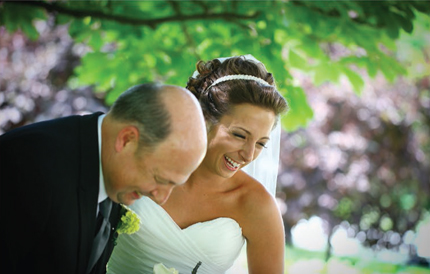
In order to push yourself to create a more beautiful and desirable product, set yourself some higher goals for things you want to work toward achieving. With this style of wedding photography, you will want to aspire to produce more profound images with visual impact, and learn to tell their story in new, creative, unexpected ways. Creating a streamlined editorial workflow to help you achieve your perfect product is a critical last goal.
Begin by reviewing your photographic history. Examine both how far you have matured as an artist and what you would still like to achieve. What things would you have done differently or better during past shoots? If you are working on your editing skills, revisit some of your favorite past images and play with them until you create a fresh look. Try to move beyond simple technical criticism and examine the moment that you captured. It may have been the right moment, but were you portraying it in a thoughtful and artistic manner? Was your lighting and choice of angles well suited to your subject? Could your equipment have limited your ability to capture the scene in the way it played out in your mind? If you made a misstep, what could you have done differently?
Refine Your Image Presentation
Next, review your image presentation. Be sure you are comfortable with what you provide and that the customer is receiving it well. You might feel better providing proofs and prints of your work, or you may have already adapted to the digital-image-only package. Think about ways you could improve on either method. For example, if you choose to provide the client with their full-resolution images, are they all fully edited and ready to print? Have you provided them with an image count that doesn’t overwhelm them but still maintains a full and accurate documentation of their wedding? In what kind of packaging will you deliver the images?
For those that provide framing options: Are they unique and different enough to distance yourself from big-name store brands? Might your imagery work better as a series, matted together in a diptych or triptych, in order to show the progression of events? Perhaps a high-quality canvas is in order for a single high-impact image.
These types of questions will help you refine your final product and decide what and how you should present it to your customers. It is something that you should revisit from time to time in order to make sure you are evolving alongside current trends. If you choose to avoid a trend (like digital copyrights, for example), incorporate your reasoning and the positive attributes into your sales pitch in order to keep your product viable.
The ways in which you choose to provide your work to your client will directly impact your future referrals and subsequent sales. Give great consideration to the materials you select. We’ll take a closer look at this topic later in the book.


Equipment: Canon EOS-1D Mark III with EF 100mm f/2.8L Macro IS USM lens. Exposure: f/2.8 at 
![]() second and ISO 320.
second and ISO 320.